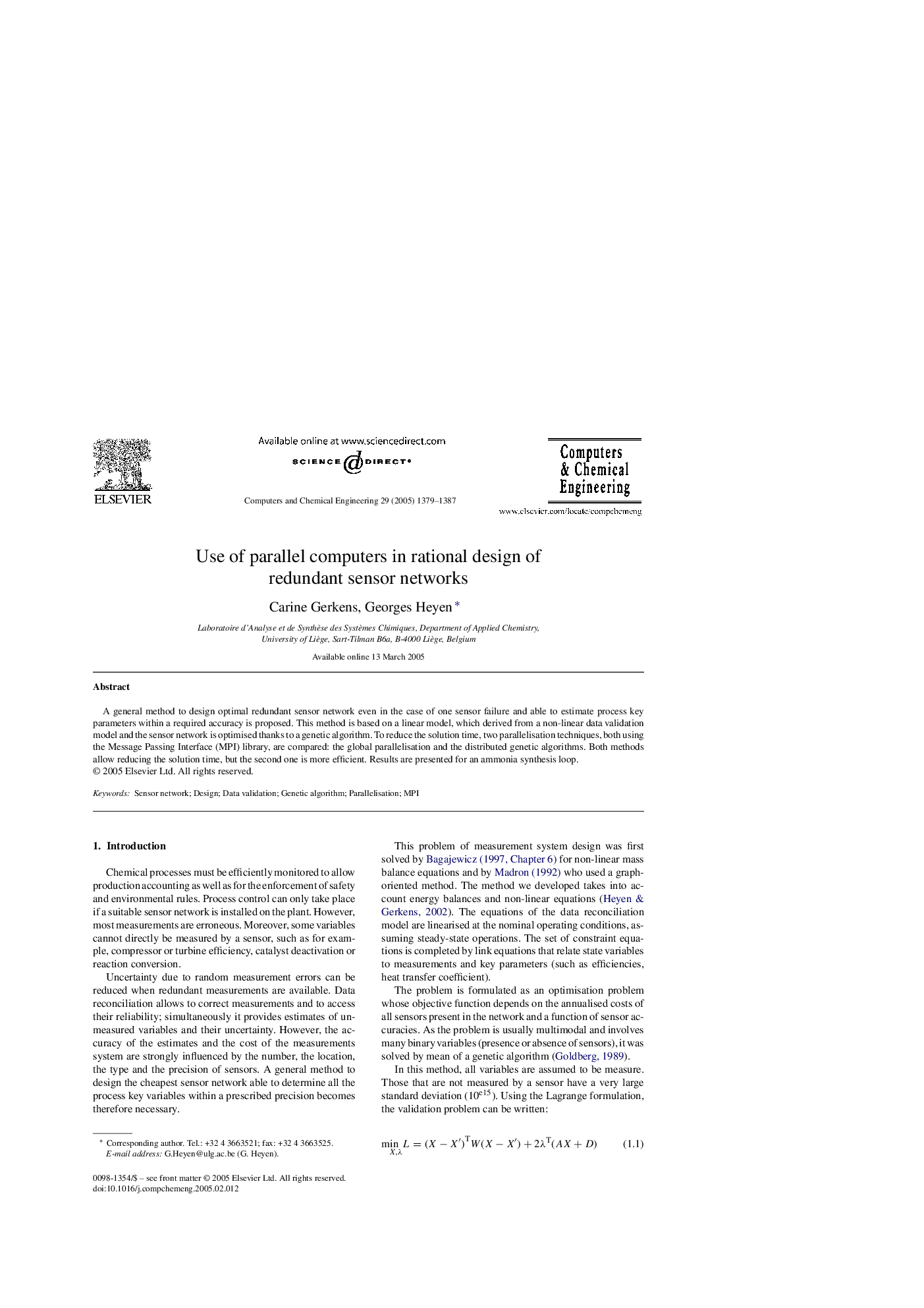| Article ID | Journal | Published Year | Pages | File Type |
|---|---|---|---|---|
| 10265738 | Computers & Chemical Engineering | 2005 | 9 Pages |
Abstract
A general method to design optimal redundant sensor network even in the case of one sensor failure and able to estimate process key parameters within a required accuracy is proposed. This method is based on a linear model, which derived from a non-linear data validation model and the sensor network is optimised thanks to a genetic algorithm. To reduce the solution time, two parallelisation techniques, both using the Message Passing Interface (MPI) library, are compared: the global parallelisation and the distributed genetic algorithms. Both methods allow reducing the solution time, but the second one is more efficient. Results are presented for an ammonia synthesis loop.
Related Topics
Physical Sciences and Engineering
Chemical Engineering
Chemical Engineering (General)
Authors
Carine Gerkens, Georges Heyen,
